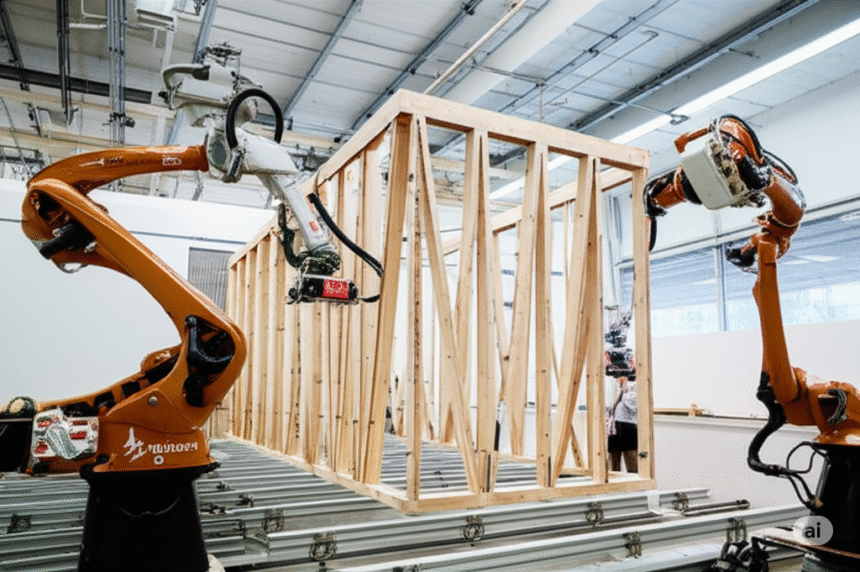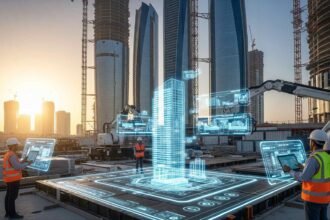In recent years, the construction industry has begun embracing automation to tackle long‑standing challenges: dangerous working conditions, low productivity gains, and cost overruns. From robotics to drones to autonomous equipment, automation offers powerful ways to keep workers safer and accelerate project delivery. Here are six evidence‑based approaches transforming modern construction.
- 1. Robots Taking on Repetitive and Hazardous Tasks
- 2. Drones Enhancing Inspections and Hazard Monitoring
- 3. Autonomous and Remote‑Controlled Heavy Equipment
- 4. Wearable Exoskeletons and Smart Protective Gear
- 5. AI‑Enabled Monitoring and Predictive Safety Analytics
- 6. Prefabrication, Modular Building and BIM-Based Planning
1. Robots Taking on Repetitive and Hazardous Tasks
A major way automation boosts safety is by assigning repetitive and dangerous work to robots. Tasks like bricklaying, concrete pouring, welding, material handling, and demolition are increasingly automated, reducing physical strain and minimizing injury risk. For instance, robotic systems can perform bricklaying at speeds up to 3,000 bricks per day, far exceeding human output, while relieving workers from constant bending and lifting (for musculoskeletal disorder reduction).
A global study of ten real construction robot deployments found that robots cut time spent on hazardous tasks by an average of 72%, improved accuracy by 55%, halved rework, and accelerated schedules by up to 2.3 times in many cases. These benefits translate to fewer injuries, faster completion, and cost savings in many projects.
2. Drones Enhancing Inspections and Hazard Monitoring
Drones,or unmanned aerial vehicles,are powerful tools for safer, faster site inspections. By flying over construction zones, drones can survey scaffolding, rooftops, cranes, and other elevated, hard‑to‑reach areas without placing human workers at risk. Equipped with high‑resolution and thermal cameras, drones detect unstable structures, overheating equipment, water damage, or other safety issues invisible to the naked eye.
Aerial data can be transmitted in real time to project teams and used for training, offering clear visuals of hazards to workers during safety briefings and reducing delays from site visits.
3. Autonomous and Remote‑Controlled Heavy Equipment
Heavy machinery like excavators, bulldozers, and cranes pose significant risks when operated manually. Automation helps reduce those risks through remote control and semi‑autonomous operation. Remote‑controlled machines allow operators to work from safe vantage points, away from unstable ground or falling debris zones.
While fully autonomous heavy construction vehicles are still largely in trial stages and not yet mainstream on building sites, leading equipment manufacturers such as Caterpillar, Built Robotics, Volvo, and Doosan are exploring semi‑automated and remotely operated solutions in controlled environments like mines or solar farm projects. These systems promise safer and more precise operation while reducing human exposure to hazards.
4. Wearable Exoskeletons and Smart Protective Gear
Wearable technologies, especially robotic exoskeletons, support workers engaged in physically demanding tasks. These devices reduce fatigue and musculoskeletal stress during heavy lifting and repetitive motion, cutting down on injury risk and boosting productivity.
Other wearable smart gear, such as wireless emergency stop devices, smart helmets, or visibility sensors, provide real‑time safety feedback and alerts to workers, enhancing hazard awareness in dynamic environments.
5. AI‑Enabled Monitoring and Predictive Safety Analytics
Modern construction firms use artificial intelligence to combine data from weather, personnel, safety gear, and on‑site behaviors to forecast and prevent accidents. A notable example is Shawmut Design and Construction, a Boston‑based firm managing over 150 sites and ~30,000 workers, that has deployed AI to monitor worker compliance, flag risks like inadequate supervision or unsafe scaffolding, and send daily alerts to safety teams.
Their AI system integrates GPS tracking, helmet sensors, and weather data to generate risk scores. During the pandemic, it was adapted to enforce social distancing; it now tracks fall protection and equipment usage, helping shrink incident rates while respecting privacy through data anonymization.
6. Prefabrication, Modular Building and BIM-Based Planning
Automation isn’t limited to machines on site, it begins in design and manufacturing. Prefabrication and modular construction shift building components to ground‑level, controlled environments where workers are safer and fewer accidents occur. Modular methods have been shown to reduce site‑reportable accidents by over 80% compared to traditional on‑site building.
Additionally, Building Information Modeling (BIM) and digital twins help simulate construction before ground is broken. Designs, workflows, and safety protocols are tested virtually, enabling early detection of clashes or hazards, reducing rework, delays, and dangerous surprises on site . Digitization of planning and data collection enables more efficient coordination and safer execution.
Together, these six forms of automation are reshaping modern construction. Robots automate risky and repetitive tasks with precision; drones provide safer, faster inspections; semi‑autonomous machinery reduces operator exposure; wearable tech supports real‑time safety; AI helps predict and prevent accidents; and modular construction and BIM reduce on‑site hazards while boosting efficiency.
The evidence across industry studies and real‑world applications demonstrates that automation can cut hazardous task time by over 70%, speed up project timelines by more than double in many cases, reduce injuries, improve accuracy and control, and deliver real cost benefits, all while protecting workers on site.







